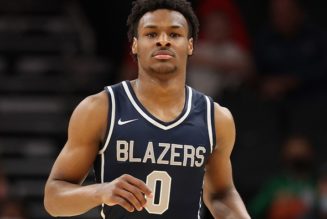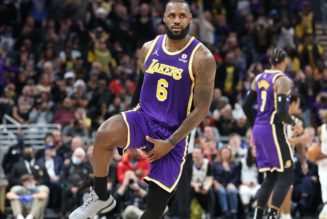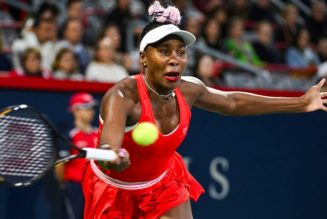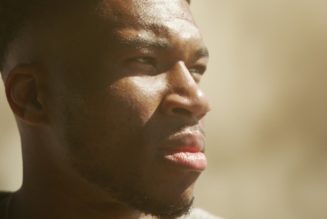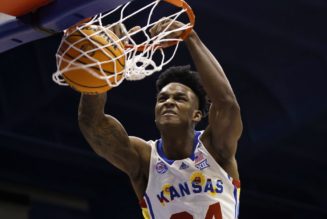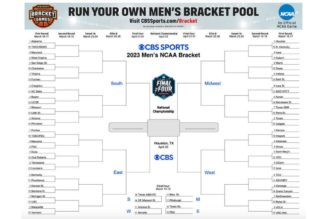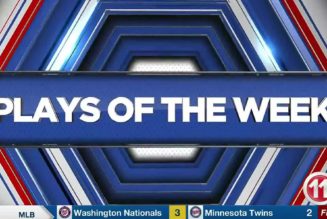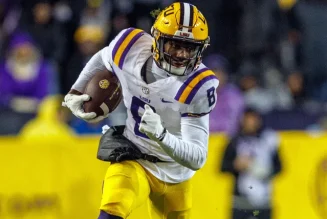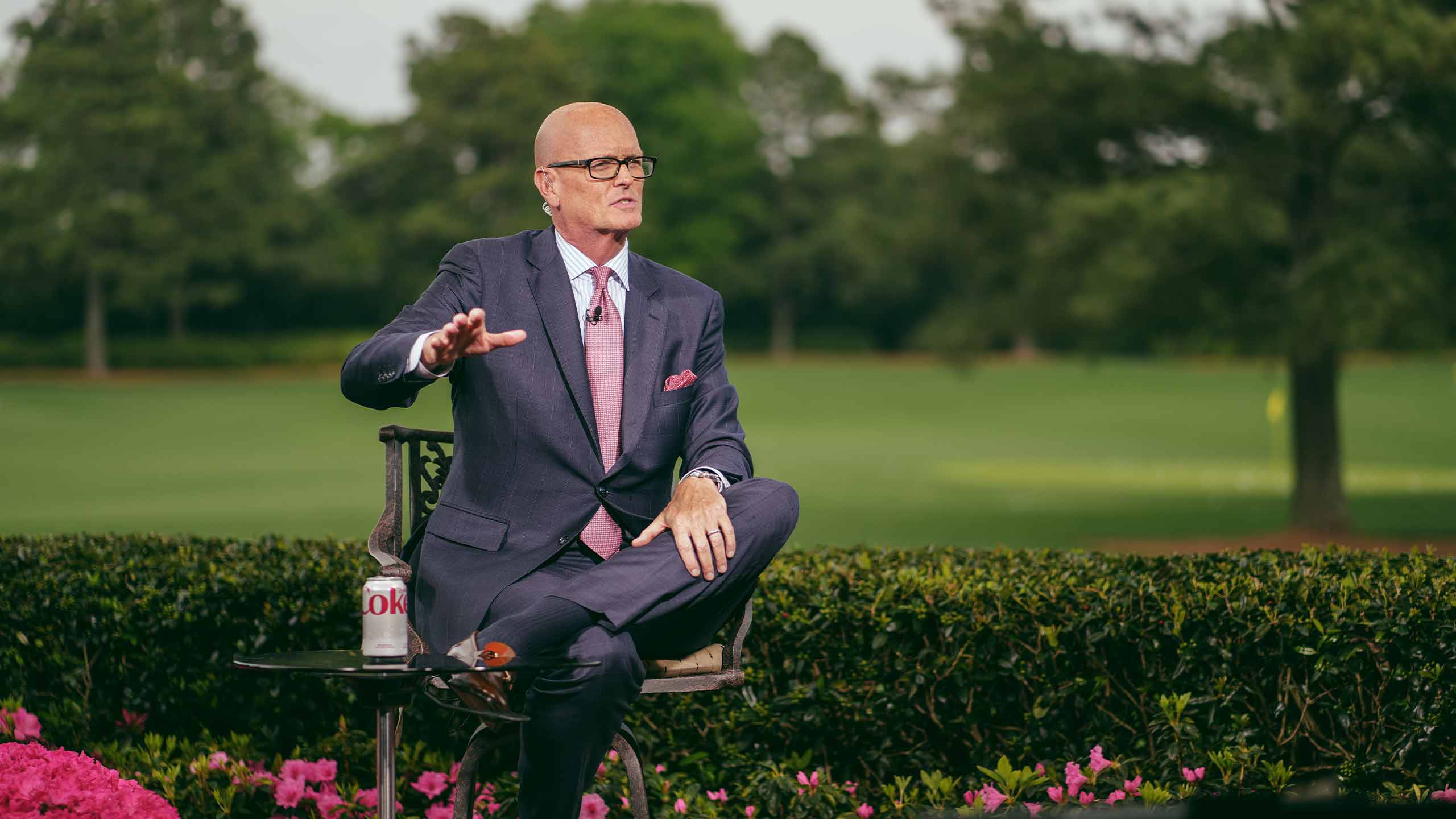
ESPN’s coverage of the Masters could be subject to change under a massive new platform.
Darren Riehl/GOLF
It is tempting to say that we’ve reached the end of the streaming revolution. After Tuesday morning, at least, the heads of three major sports TV power players would be compelled to agree with you.
After all, on Tuesday morning, those three sports TV behemoths announced a sparkling new (yet all too familiar) business strategy: Cable.
The three networks — Disney (owners of ESPN), Fox and Warner Bros. Discovery — didn’t say it quite that clearly. But the announcement that their sports properties would soon be bundled under a new company and offered to audiences at a higher price point didn’t leave much room for PR spin. The truth appeared obvious: television’s era of great unbundling was officially over. Instead of networks offering standalone products at a lower price point to users and letting them choose the winners, the networks realized that combining their products under one mighty conglomerate and sharing the profits had the best — or at least equal — earnings potential.
In an instant, a decade of fracture in the television landscape bubbled to the surface. At the beginning of the streaming revolution, networks had promised viewers that a brighter, more democratic TV future lay ahead. Now, those same networks seemed to be suggesting that the best future involved the same kind of bundled, higher-cost option that had caused the revolution in the first place.
But what if it wasn’t quite that simple?
The truth is that, yes, things with the new Disney/WBD/Fox product look a lot like they did in 2008. The New Bundle (or NB, as we will henceforth call it) will allow viewers to pay one larger fee — rumored to be around $50 per month — to access the three media giants’ near-complete suite of sports programming, just like a classic cable sports bundle. That’s access to more than half of the registered sports TV rights in the United States, including pieces of the NFL, NBA, NHL, MLB, college football, college basketball and pro golf, all for a few bucks less than the cheapest cable TV sports option. The NB will be owned equally by all three parties but operated by a separate, standalone entity that has yet to be named. Once again, the networks will share a piece of the TV revenue pie — even though some (ESPN, Fox) will be contributing higher-value entities to the pot.
For golf, the implications are notable. Four considerable golf products will be included under the new bundle: ESPN+’s tremendous PGA Tour Live streaming coverage, ESPN’s Thursday and Friday Masters coverage, ESPN’s Thursday and Friday PGA Championship coverage, and WBD’s coverage of The Match. The remainder of golf’s major championships, PGA Tour, Ryder Cup and LIV coverage will not. Those products, which are aired on CBS and NBC primarily, would require additional subscriptions or costs for the consumer to view.
In some ways, golf shows the primary issue with the NB: it’s not a complete solution. Under the New Bundle, viewers are only receiving a chunk of the sports they desire to watch for 70 percent of the cost of a full cable subscription. But the truth is that the New Bundle’s owners know it’s not a complete solution — that’s why they made it.
Unlike the cable model, which forces many users to sign up for channels they don’t want in order to get the ones they do, the New Bundle comes at a time when nearly every major network (and many major sports properties) offers a direct-to-consumer product. Users who want WBD’s suite of sports programming but don’t want ESPN’s have the option to subscribe to only Max, and users who don’t care about Disney/WBD/Fox but desperately want access to NBC aren’t forced to pay for all four. Why bother pursuing a bundle when direct-to-consumer is the safest (and least corporately murky) path to profitability? Well, because the market forces that brought us to Tuesday’s announcement necessitated a gap solution for the networks — and that seems to be precisely what the NB is.
The creation of the New Bundle is both a symptom and a side effect of a dangerously expensive sports TV economy and a slowly eroding cable TV business. In an era of declining cable subscriptions, sports rights remain one of the few ways to guarantee eyeballs and advertising dollars, which is why they cost so much money. But in an era of declining cable TV profitability, sports rights remain one of the few ways to ensure cable providers will continue paying networks their other, equally important stream of revenue: carriage fees.
Carriage fees — paid by the cable provider to the network on a per-subscriber basis — are a scale-tipper in the sports TV economy because they perpetuate what business folks call “a virtuous cycle.” It works something like this: Audiences want to watch ESPN. Cable providers pay ESPN a carriage fee to have ESPN on their service. ESPN uses carriage fee money from cable providers to buy up all sorts of important sports rights, ensuring its product is even more indispensable to audiences. Because ESPN now owns lots of rights and is totally indispensable to audiences, ESPN can demand an even higher carriage fee from a cable provider, further enriching the network to purchase more sports rights and become more indispensable (and further raising costs on the consumer). This mechanism turned ESPN from a niche cable channel into a global financial engine, and the $10 per subscriber per month the network is believed to receive today from cable providers is a not insignificant piece of Disney’s overall financial outlook. The problem with carriage fees, though, is that they require cable subscriptions, and that’s the side of the television business that’s gone into freefall in the past decade.
All this has brought the networks inching closer to the proverbial rock-and-a-hard place. With the cost of sports rights ballooning, networks need more money from advertising and carriage fees just to break even, and with the number of cable subscribers plummeting, the latter source of income is dwindling. Eventually, execs hope, the cost of their own direct-to-consumer products will be enough to bridge the gap. But with ESPN still another year away from its DTC platform (reportedly ringing in at $30/month) and the slow growth of the medium more generally, the networks realized they needed a safer hand. This is what led to Tuesday morning’s announcement, and what will bring executives at Disney, Fox and WBD into the same board room for the considerable future: safety.
It is no coincidence that the cost of the New Bundle is believed to be tied directly to the cost of each network’s carriage fees, because that’s precisely why it was created. The New Bundle is a way to turn — or at least slow — the tide of lost carriage fees, allowing each of the networks involved to make up a chunk of the money lost by cord-cutting while their direct-to-consumer businesses grow. Perhaps sports fans will find it entirely more palatable than the individualized solution brought about by the great unbundling, at which point the New Bundle could become a vision of the future. More likely, though, is that the NB will provide those making the transition from cable to streaming with an option that lowers the risk of a bubble event for the networks in the meantime. In this reality, the NB, then, should be viewed not as an effort at recreating the cable wheel but as an attempt at patching up a sizeable hole in the side wall.
There are still many details to parse out from the NB — cost, availability, tech, leadership, governance and the downstream effects on viewership data in an increasingly volatile ad market, to name only a few — but there is no questioning the motives behind it are different than the ones that brought us to cable. Unlike the cable behemoths, the networks would surely rather not split the cost of subscription revenues, just as Bob Iger (Disney), Jimmy Pitaro (ESPN), Lachlan Murdoch (Fox) and David Zaslav (WBD) would much rather spend their board room time building a business that isn’t 66.66 percent someone else’s. But strained times require strange solutions, and with more than $200 billion expected to be outlayed for U.S. sports rights over the next decade, there’s little doubt these are strained times in sports TV.
There’s good news, though, for the sports leagues involved (there almost always is). The New Bundle opens the possibility for a new paying sports audience, assuming all parties remain on their own, and that could make the next round of sports TV rights even more profitable for the leagues on the selling side (which is perhaps why the leagues “blindsided” by Tuesday’s announcement weren’t immediately all that upset about it).
In some ways, yes, we have reached the end of the sports streaming revolution. But if you asked those involved in creating the New Bundle, they’d correct you quickly. We’ve reached the end … of the beginning — and there’s a whole lot more where this came from.
The author welcomes your thoughts at james.colgan@golf.com — and encourages you to sign up for the Hot Mic newsletter below.
Latest In News
Services Marketplace – Listings, Bookings & Reviews



